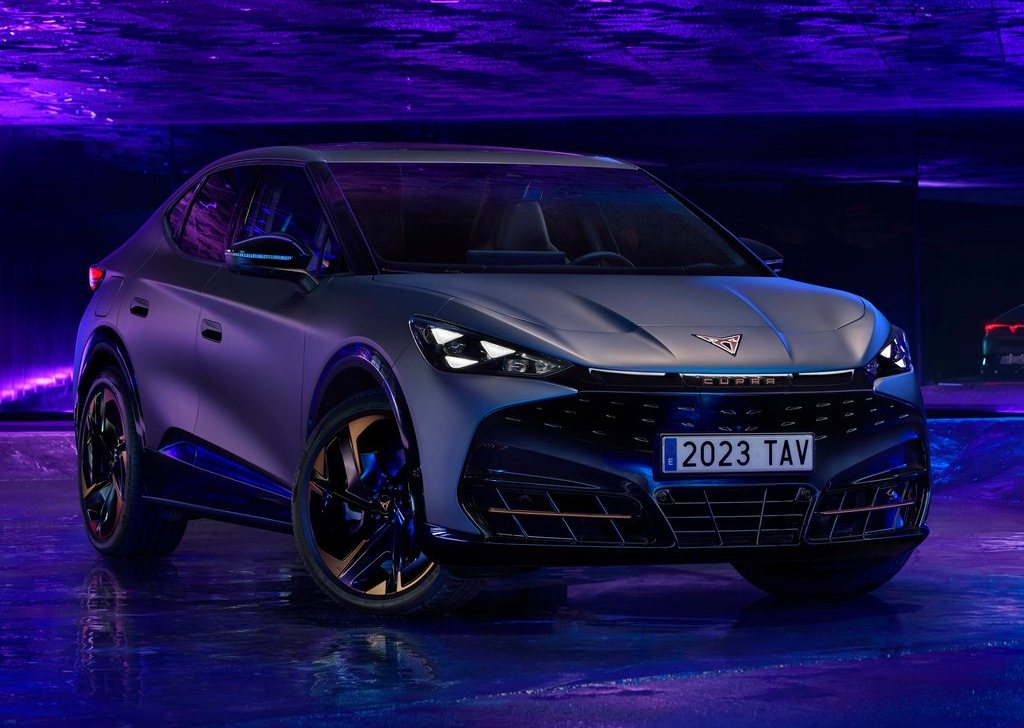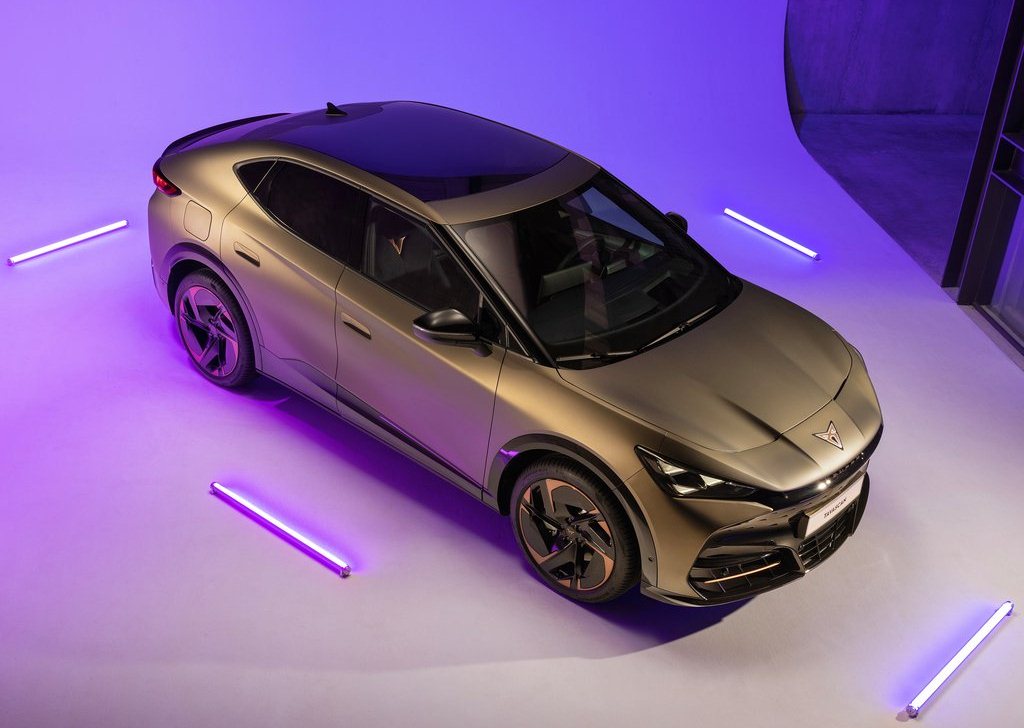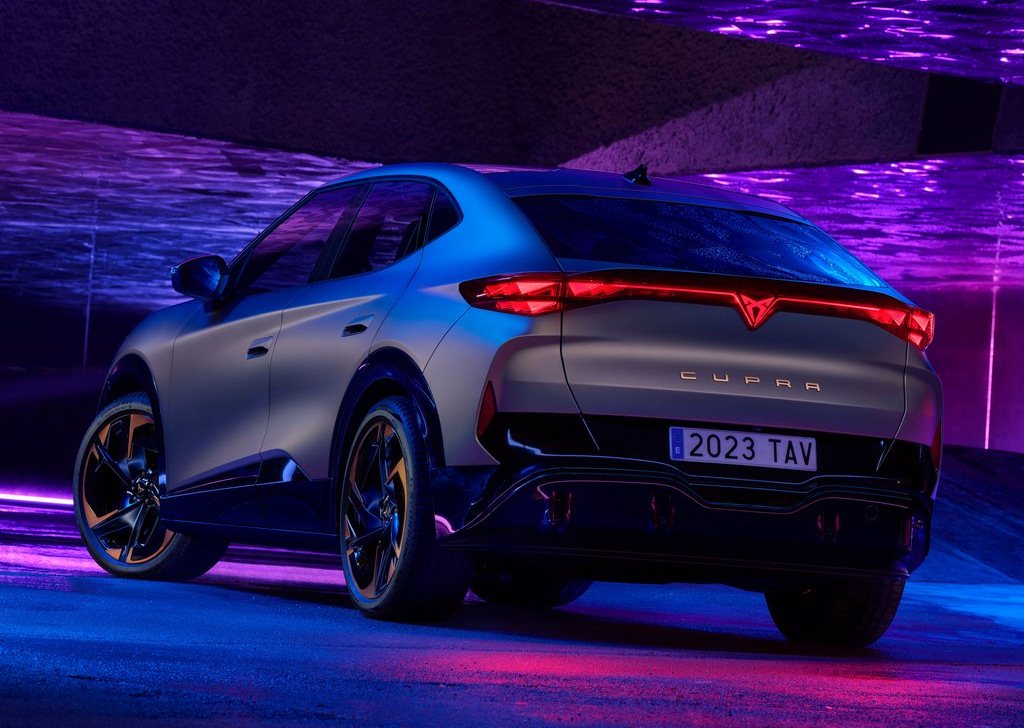The unconventional challenger brand takes the next step in its all-electric journey with the unveiling of the CUPRA Tavascan. The first hero in a new era for the brand, the CUPRA Tavascan is not only its first all-electric SUV coupé, but also the impulse for its new design language, one that will feature on future electrified cars in the CUPRA line-up.
CUPRA Tavascan joins CUPRA Born and six plug-in hybrid variants: CUPRA Leon, CUPRA Leon Estate and CUPRA Formentor, each available with two plug-in hybrid variants. CUPRA Tavascan will come to market in 2024, quickly followed by CUPRA Terramar in the same year, and CUPRA UrbanRebel - the brand's urban electric car - in 2025.
Built on Volkswagen Group's MEB electric vehicle architecture, two power output options are available. At the top of the range is the 340PS (250kW) VZ version, with power transferred to the tarmac using an all-wheel drive system that integrates an electric motor in both the front and rear axles for the ultimate driving experience. There is also a rear-wheel drive variant delivering 286PS (210kW) with an electric motor placed in the rear axle. The Tavascan's performance is matched by the battery technology, with enough energy storage to travel around 341 miles (549km) on a single charge.
The CUPRA Tavascan maintains the brand's desire to deliver a driver's car, but one that captures a new and expressive interpretation of performance. Selectable chassis setups through its DCC Sport system, progressive steering and performance tyres mounted on 21" forged alloy wheels connect the driver with the car and the road to provide a unique driving experience.
Powertrain
The CUPRA Tavascan's powertrain is set up to deliver the most engaging drive possible. Thanks to the Volkswagen Group's MEB platform, it integrates advanced all-electric systems to deliver a unique experience.
CUPRA Tavascan VZ: The range-topping VZ variant features a dual motor layout (rear motor: 210kW; front motor: 80kW) to deliver even greater dynamics, with the ability to send up to 30% of the vehicle's power to the front wheels when more traction is required. It offers an impressive combined output of 340PS (250kW), with a torque of 545Nm (rear motor) and 134Nm (front motor). The selectable CUPRA Mode - Range, Comfort, Performance, CUPRA, Individual and Traction (for the all-wheel drive version) - means the driving experience can be tailored to each driver's preference.
The all-wheel drive system uses a permanent magnet synchronous motor with a maximum speed of 13,000rpm integrated above the rear axle in front of the centre of the wheels. Torque is transferred using a single-speed transmission with a differential.
It is assisted by a front mounted motor when the onboard control unit detects torque requirements for the front wheels.
The front asynchronous motor benefits from minimal drag losses when inactive and the coaxially mounted front drive unit is lightweight at only 60kg. As an all-electric vehicle there is no need for a mechanical connection, such as a traditional drive shaft, clutch, or differential, between the two axles, making the system responsive, lightweight and compact.
Chassis
Electrification and performance are the perfect match, and the challenger brand takes it to the next level with the CUPRA Tavascan.
Underpinned by the Volkswagen Group's MEB architecture, the modular electric drive matrix is designed specifically to give engineers a starting point to deliver the best handling vehicle possible. And the CUPRA Tavascan development team in Barcelona (Martorell) have used the toolkit to do so.
Building blocks for success: The robust chassis uses well-known technologies as a baseline for ride and handling performance. The front MacPherson struts and an advanced multi-link rear design have been tuned to make sure that the Tavascan provides smooth and intuitive feedback to steering inputs whether driving at motorway speeds or covering ground on smaller, more technical roads.
The battery is positioned centrally between the axles meaning weight distribution is optimised (49:51) with a low centre of gravity, improving agility.
The CUPRA Tavascan's progressive steering puts the driver in complete control, aided by the brake actuation and feel, helping the SUV coupé to feel assured in all conditions.
Safety and convenience
The CUPRA Tavascan is a safe everyday vehicle that can help reduce the stress of driving and minimise any possible incidents.
The onboard technologies also take some of the strain of driving thanks to semi-automated driving capabilities.
A suite of onboard advanced assisted driving systems: Tavascan is equipped with a suite of advanced systems: Predictive Adaptive Cruise Control, Traffic Sign Recognition, Intelligent Speed Adaptation, Side Assist, Lane Assist, Exit Warning, Exit Assist, Fatigue Detection and Rear View eSmart Camera. In addition, advanced active safety functions, such as Front Assist, with swerve support and turn assist, prevents or mitigates possible damage in an emergency situation, monitoring other road users like cars, pedestrians and bicycles.
With the new Car2x system, communication between other vehicles is enabled, sharing road information about emergency vehicles, broken down vehicles and accidents, allowing it to prevent critical situations in advance.
The full range of assistance systems deliver valuable information to the driver, and all relevant information is present in the driver's line of sight, thanks to the augmented reality head-up display system, minimising distraction.
The onboard systems use data supplied from an array of integrated sensors, whether it's radar, camera or ultrasonic, and information fed from outside sources to build a picture of the vehicle's surroundings and any possible hazards.
New Connected Travel Assist: When the road ahead allows, Travel Assist technology works in conjunction with Adaptive Cruise Control and information obtained from the Cloud. The cumulative information actively keeps the vehicle in the centre of the lane, adapting the speed while cornering. This next-generation technology also offers assisted lane changing on motorways.



















![2026 Kia Sportage [EU] Review: A Refined European Crossover with Bold Style and Electrified Options](https://blogger.googleusercontent.com/img/b/R29vZ2xl/AVvXsEgqMRwJE1m90uCMgRSB6oc4bAzmAaKXJlNoCwavK5fXHaphLYY1sUVXdxUC94zuj95CdjDG2SqRnUBYMqta-dapTLIaHhzEdJAS821ldVMQOKfAZNpQlZ5fYTwKzKbKj8ad9QeKlaQPcNLRZ6zaGvuXhsg1kQ6zQCQqYtjmOM8q9u-a7Nl3WYjp773OLXJR/w680/2026%20Kia%20Sportage%20%5BEU%5D_01.jpg)



0 Comments